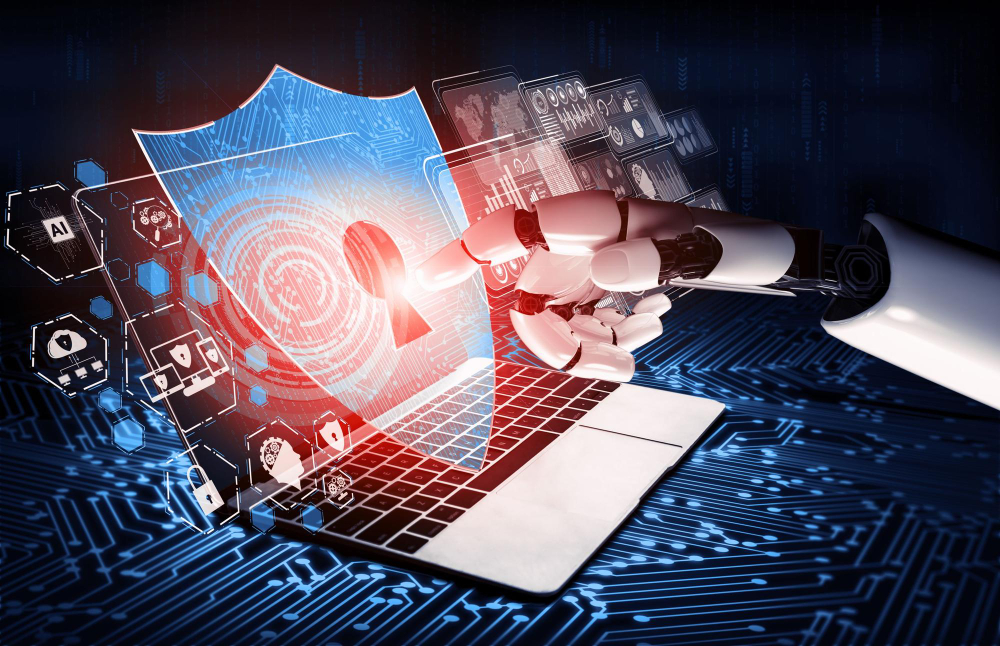AI‑Driven Threats & Defensive Automation
AI-Augmented AI‑Driven Threats & Defensive Automation: The Future Battlefield of Cybersecurity
In the relentless evolution of cybersecurity, artificial intelligence (AI) has become a cornerstone technology—empowering both cyber attackers and defenders. But as AI matures, a new phenomenon is emerging that’s poised to redefine the security landscape: AI-Augmented AI‑Driven Threats and Defensive Automation.
Put simply, this is where AI systems no longer act alone but augment and enhance each other’s capabilities, creating highly adaptive, autonomous adversarial and defensive forces. This blog dives into what this means, why it’s a game changer, and how organizations can prepare for this rapidly accelerating arms race.
What is AI-Augmented AI?
At its core, AI-Augmented AI describes a scenario where one AI system enhances or assists another AI system—whether on offense or defense. Unlike traditional AI tools executing fixed rules or models, AI-Augmented AI systems learn from, react to, and improve based on the outputs and actions of other AI systems. This mutual augmentation leads to a continuous feedback loop of innovation and adaptation.
Examples:
Offensive AI agents use AI-generated insights to refine malware, craft convincing social engineering content, or develop evasive tactics in real-time.
Defensive AI agents adapt detection algorithms based on observed AI-driven attack patterns and autonomously deploy countermeasures using AI-powered automation.
Why AI-Augmented AI is a Game Changer
1. Exponential Increase in Attack Sophistication
AI-augmented attacks move beyond scripted or signature-based threats. Imagine malware that can:
- Self-modify its code to avoid detection.
- Automatically generate convincing phishing emails using deepfake audio and video.
- Analyze network defenses dynamically and pivot attack vectors accordingly.
- This level of complexity outpaces traditional security approaches, rendering many conventional defenses obsolete.
2. Fully Autonomous Defense
On the defense side, AI augmentation means security systems can:
- Continuously learn and evolve in response to new threats without waiting for human updates.
- Detect subtle anomalies caused by advanced adversarial AI.
- Automatically isolate compromised devices, apply patches, and remediate threats in real time.
Key Technologies Driving AI-Augmented AI
Multi-Agent Systems & Reinforcement Learning
Multiple AI agents (both attackers and defenders) operate simultaneously—learning from interactions, competing, and collaborating to optimize their goals. This dynamic environment mimics real-world cyber conflict more closely than static models.
Generative Adversarial Networks (GANs)
GANs consist of two AI models working in opposition: one generates data (e.g., malware or synthetic media), and the other detects it. This adversarial relationship drives rapid evolution of both offensive and defensive AI.
Explainable AI (XAI)
As AI systems become more autonomous, human trust hinges on understanding why AI makes certain decisions. Explainable AI frameworks enable analysts to verify alerts and responses, bridging the gap between machine intelligence and human intuition.
Behavioral Analytics & Continuous Monitoring
Profiling normal user and device behaviors with AI helps detect when adversarial AI attempts subtle intrusions or manipulations—often invisible to traditional security tools.
Real-World Use Cases of AI-Augmented AI
Offensive AI-Augmented Threats
- Polymorphic Ransomware: An AI ransomware that changes encryption methods and delivery channels on-the-fly to avoid signature detection.
- Deepfake Phishing Campaigns: AI-generated audio and video impersonations used in spear-phishing, creating hyper-realistic bait.
- Automated Vulnerability Discovery: AI bots that continuously scan and exploit zero-day vulnerabilities faster than defenders can respond.
Defensive AI-Augmented Automation
Autonomous Incident Response: Security orchestration platforms that isolate affected endpoints, deploy patches, and launch countermeasures without human intervention.
AI-Driven Threat Hunting: Systems that simulate attacker AI behavior to anticipate new attack patterns and preemptively secure vulnerable assets.
Adversarial AI Detection: Tools specifically designed to identify and mitigate adversarial attacks on AI models, including prompt injections and data poisoning.
How Organizations Can Prepare
1. Embrace Autonomous Defense Systems
Move beyond manual alerts. Implement AI-powered Security Orchestration, Automation, and Response (SOAR) platforms that autonomously detect, investigate, and respond to threats.
2. Invest in Continuous AI Red Teaming
Use AI-driven red teams to simulate evolving attacker AI and stress-test defenses continuously. This proactive approach reveals blind spots before adversaries do.
3. Integrate AI Governance and Ethics
Ensure AI systems operate transparently and are regularly audited. Human oversight and ethical guidelines are critical to prevent unintended consequences or AI misuse.
4. Train Human-AI Collaborative Teams
Develop “centaur” teams where human analysts and AI systems work in tandem—combining human judgment with AI’s speed and scale for more effective threat detection and mitigation.
Challenges and Risks
While promising, AI-Augmented AI also presents risks:
- Escalating Complexity: Autonomous AI agents acting unpredictably can introduce new attack surfaces or collateral damage.
- Adversarial AI Arms Race: Defenders and attackers continuously leapfrogging each other, raising the stakes.
- Trust and Transparency: Overreliance on AI without explainability risks blind spots and erroneous responses.
- Data Privacy: Extensive AI monitoring may impact user privacy if not managed carefully.
Conclusion: Navigating the Future of Cybersecurity
AI-Augmented AI‑Driven Threats and Defensive Automation mark the dawn of a new cybersecurity paradigm—one characterized by fully autonomous, self-improving AI agents locked in a high-stakes game of cat and mouse.
Organizations that proactively adopt these technologies, embed strong AI governance, and cultivate human-AI collaboration will not only survive but thrive in this complex new landscape.
The future of cybersecurity isn’t just about fighting AI with AI—it’s about augmenting AI to outthink and outmaneuver threats at machine speed and human wisdom combined.





